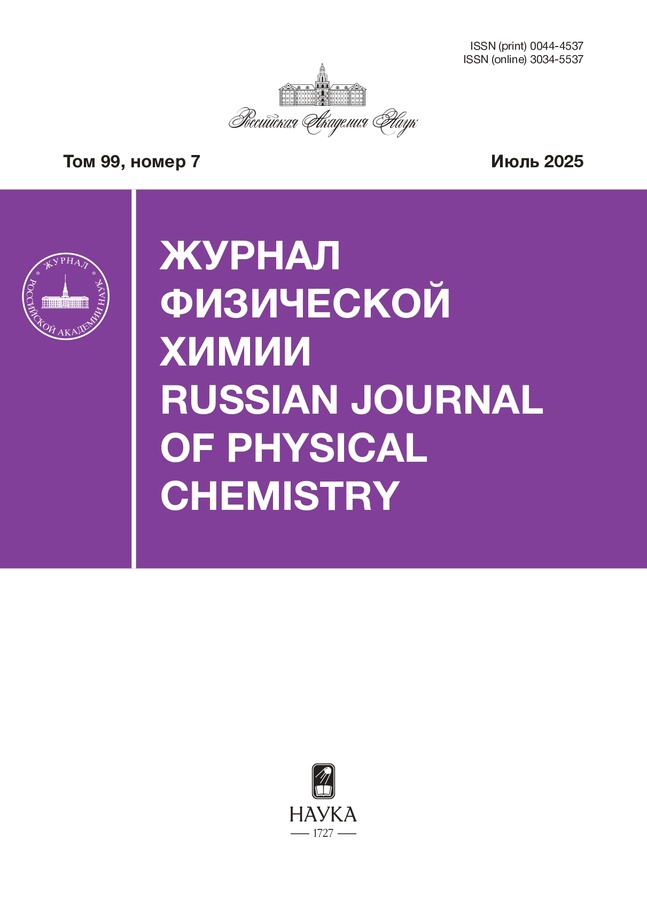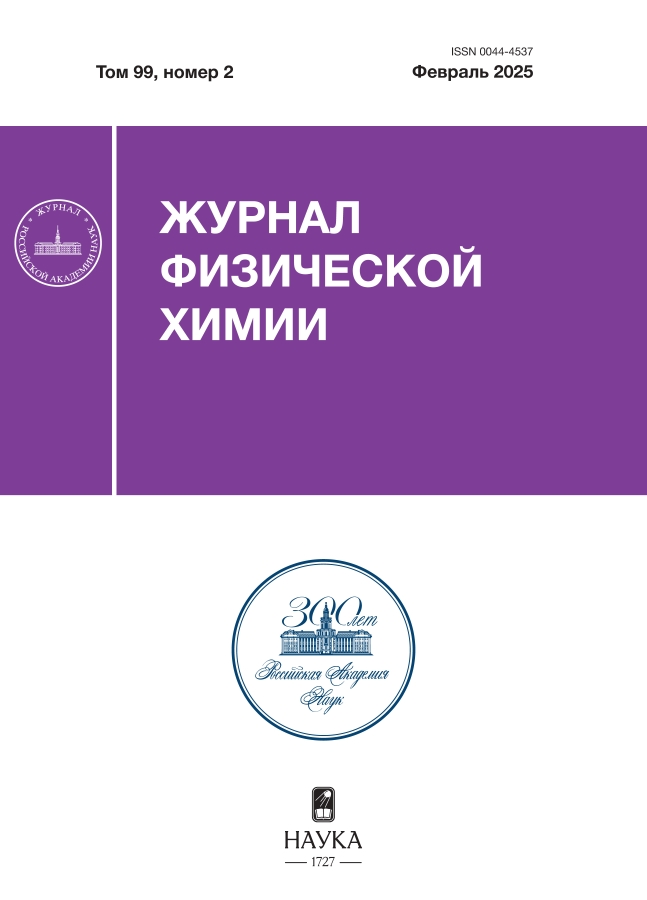Критическая точка смачивания в системе жидкий свинец – расплавленный галогенид щелочного металла
- Авторы: Степанов В.П.1
-
Учреждения:
- Институт высокотемпературной электрохимии УрО РАН
- Выпуск: Том 99, № 2 (2025)
- Страницы: 319-323
- Раздел: ФИЗИЧЕСКАЯ ХИМИЯ ДИСПЕРСНЫХ СИСТЕМ И ПОВЕРХНОСТНЫХ ЯВЛЕНИЙ
- Статья получена: 19.06.2025
- Статья опубликована: 20.05.2025
- URL: https://hum-ecol.ru/0044-4537/article/view/685282
- DOI: https://doi.org/10.31857/S0044453725020181
- EDN: https://elibrary.ru/DCXJBW
- ID: 685282
Цитировать
Полный текст
Аннотация
Экспериментальные данные о поверхностном натяжении жидкого свинца и расплавленных галогенидов натрия, калия и цезия на границе с газовой фазой наряду с величинами межфазного натяжения между ними легли в основу анализа фазового перехода смачивания поверхности в двухфазных высокотемпературных системах. Установлена зависимость работы адгезии солевого расплава к металлу от температуры и природы контактирующих фаз. Найдены условия перехода от частичного смачивания поверхности металла солевым расплавом к пленочному режиму.
Ключевые слова
Полный текст
Об авторах
В. П. Степанов
Институт высокотемпературной электрохимии УрО РАН
Автор, ответственный за переписку.
Email: v.stepanov@ihte.ru
Россия, Екатеринбург
Список литературы
- Heady R.B., Cahn J.W. // J. Chem. Phys. 1973. V. 58. P. 896.
- Moldover M.R., Cahn J.W. // Science. 1980. V. 207. P. 1073.
- Schmidt J.W., Moldover M.R. // J. Chem. Phys. 1983. V. 79. P. 370.
- De Gennes P.G. // Rev. Mod. Phys. 1985. V. 57. P. 827.
- Bonn D. // Current Oppinion in Colloid Interface Sci. 2001. V. 6. P. 22.
- Bonn D., Eggers J., Indekeu J., Meunier J. // Rev. Mod. Phys. 2009. V. 81. P. 739.
- Cahn J.W. // J. Chem. Phys. 1977. V. 66. P. 3667.
- Степанов В.П. // Журн. физ. химии. 2023. Т. 97. С. 1660.
- Pershin P., Khalimullina Yu., Arkhipov P., Zaikov Yu. // J. Electrochem. Soc. 2014. V. 161. D824–D830.
- Arkhipov P.A., Zaikov Yu.P., Khalimullina Yu.R. et al. // J. Mol. Liquids. 2022. V. 361. P. 119619.
- Лебедев В.А. Избирательность жидкометаллических электродов в расплавленных галогенидах. Челябинск: Металлургия, 1993.
- Lewin R.G., Harrison M.T. Reprocessing and recycling of spent nuclear fuel. Cambridge: Woodhead Publishing Series in Energy. 2015.
- Mirza M., Abdulaziz R., Maskell W.C. et al. // Energy Environ. Sci. 2023. V. 16. P. 952.
- Исаева Л.А., Поляков П.В., Михалев Ю.Г., Рогозин Ю.Н. // Электрохимия. 1984. Т. 20. С. 957.
- Степанов В.П. Межфазные явления в ионных солевых расплавах. Екатеринбург: УИФ “Наука”, 1993.
- Tanaka T., Nakamoto M., Oguni R. et al. // Z. Metallkunde. 2004. V. 95. P. 818.
- Smirnov M.V., Stepanov V.P. // Electrochim. Аcta. 1982. V. 27. P. 1551.
- Справочник химика / Под ред. Б.П. Никольского. Л.-М.: ГХИ. 1962. Т. 1.
- Chaudhary S., Ranjan P., Chakraborty T. // J. Chem. Res. 2020. V. 44. P. 227.
- Делимарский Ю.К. Электрохимия ионных расплавов. М.: Металлургия, 1978.
Дополнительные файлы
Доп. файлы
Действие
1.
JATS XML
Скачать (161KB)
3.
Рис. 2. Зависимость межфазного натяжения на границе свинца с солевым расплавом при 1100 К от размера катиона (слева направо: Na+, K+, Cs+).
Скачать (116KB)
4.
Рис. 3. Работа адгезии расплавов галогенидов щелочных металлов к жидкому свинцу как функция температуры.
Скачать (185KB)
5.
Рис. 4. Работа адгезии между жидким свинцом и расплавами галогенидов натрия, калия и цезия в зависимости от суммы поляризуемостей ионов солевой фазы при 1100 К.
Скачать (107KB)
6.
Рис. 5. Показатель растекания солевого расплава по поверхности жидкого свинца как функция температуры
Скачать (175KB)
















